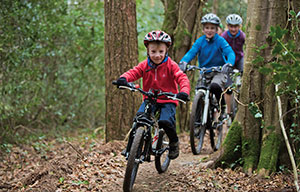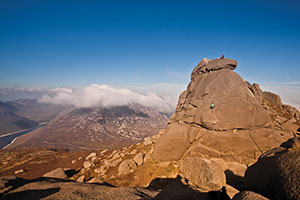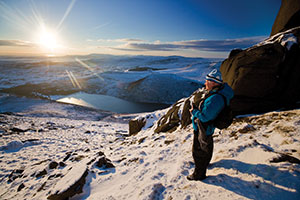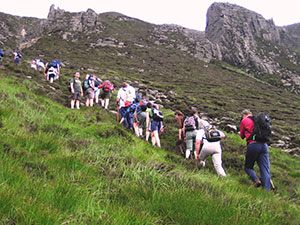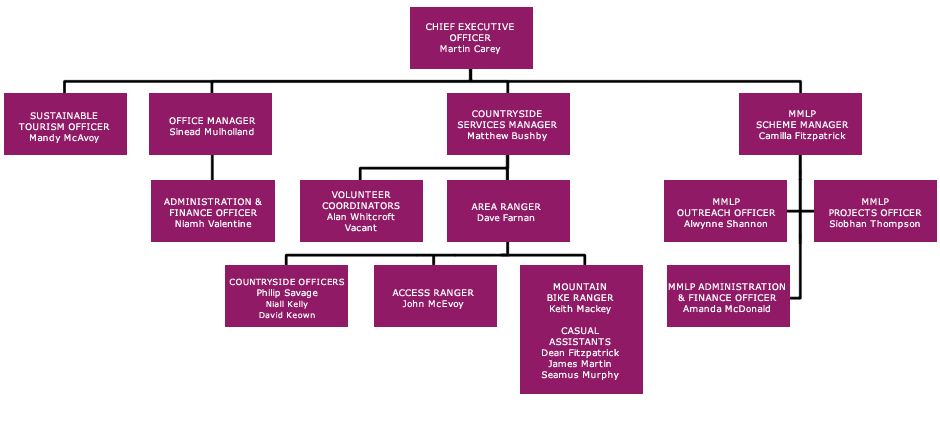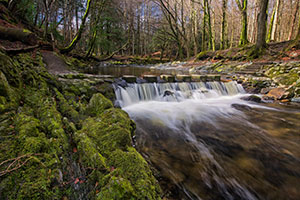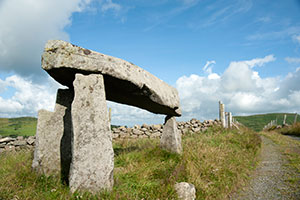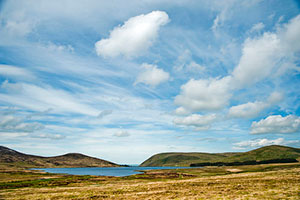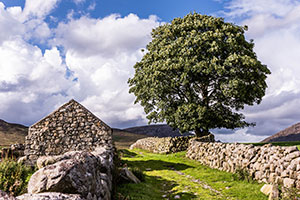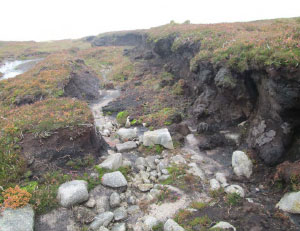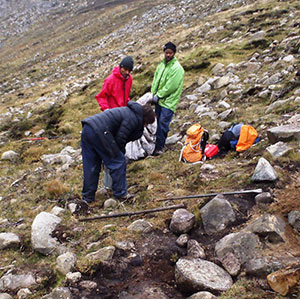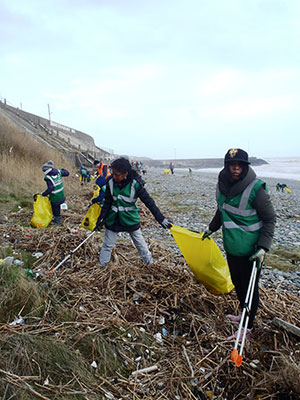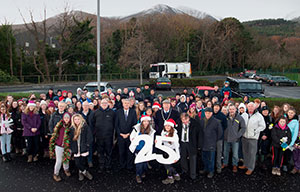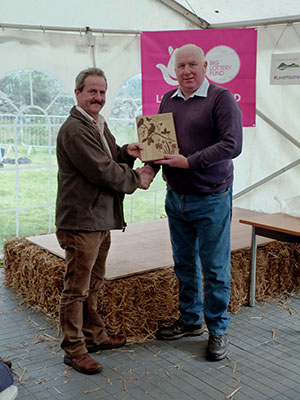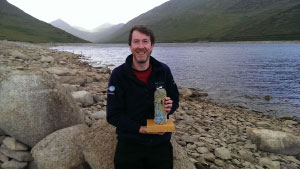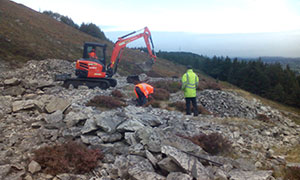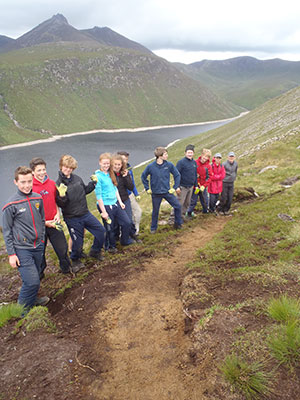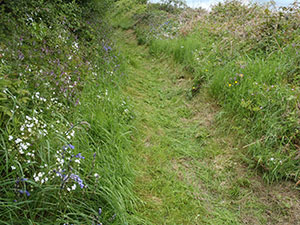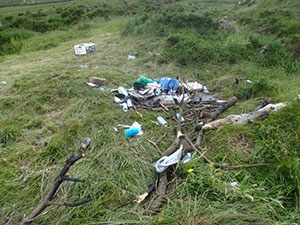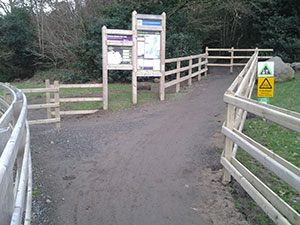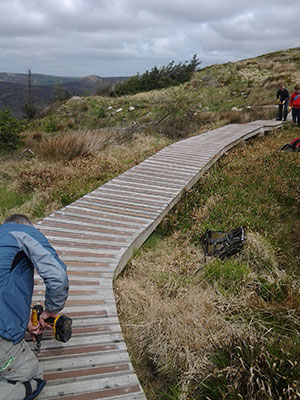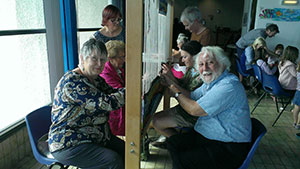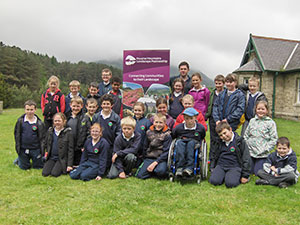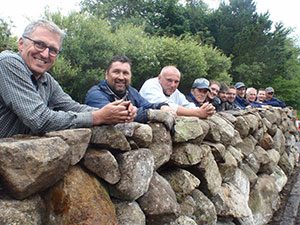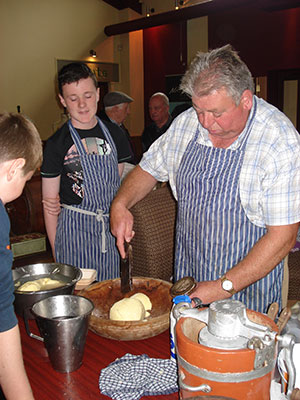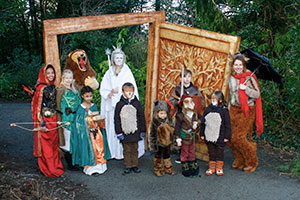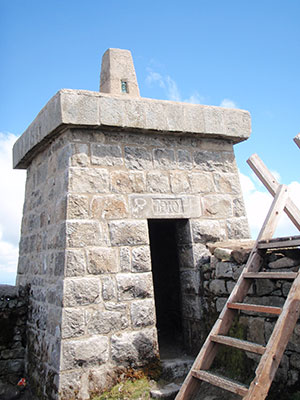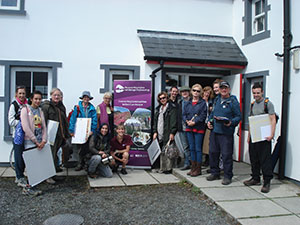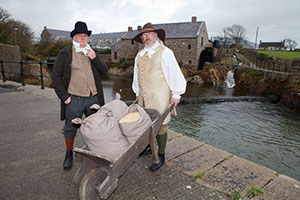Sustainable Tourism
Our Sustainable Tourism Officer continued to work closely with MHT colleagues to lever tourism value from the various natural, built and cultural heritage projects undertaken. Collaboration with partner organisations also ensured coherence and strategic impact of developments across the Mourne Mountains & Ring of Gullion destination.
There was a focus in our approach on authentic Mourne experiences relevant to the ‘experiential tourism pillars’ developed by Northern Ireland Tourist Board (now Tourism NI). To illustrate this approach we have structured this overview of activities and outcomes around these pillars
Living Legends
‘Making our history, legend & stories alive and interactive’.
The Mourne AONB is steeped in stories, myths and heritage. Our ‘legends within the landscape’ range from the role of the Mournes in inspiring the magical world of Narnia created by C S Lewis to the very real achievements of the skilful and hardy Mourne people in industrial heritage - whether through the construction of the Silent Valley Dams or building the Mourne Wall or quarrying granite.
A key step in our approach has been the development of tangible focal points for interpretation and celebration of these ‘Living Legends’. A number of the infrastructure projects came to completion in 2014/15 and accompanying industry capacity development enhanced awareness of the new tourism products and the special heritage they interpret. Tours, video presentations and discussions were complemented by one to one meetings with tourism business to focus on how they could showcase and capitalise on our key experiential themes. Business stakeholder workshops took place at Kilbroney Park, focused on the Narnia trail launched in January 2015 and the legends associated with Fionn McCool and the ‘Big Stone’ and at Annalong, focused on themes related to the interpretive exhibition in the restored Cornmill, which formally opened in October 2014. The new attractions also proved particularly popular with some of the FAM visits we facilitated, including a tour for US business and incentive travel operators.
Another project to add a layer to the Mourne experience was the restoration of fifteen historic stone structures – bridges, gates, follies, obelisk – in Tollymore Forest Park. On site interpretation, short films and guided walks animated the story of these idiosyncratic aspects of the built heritage, designed by legendary landscape architect, Thomas Wright, ‘the Wizard of Durham’. While on site interpretation was not appropriate at the restored Mourne Wall summit towers, video and print media were employed to tell the tale of these iconic structures which, literally and metaphorically, stand out in the landscape.
Unique Outdoors
‘Becoming a distinct outdoor recreation & adventure playground’.
In this theme Tourism NI considers ‘all activities that involve a combination of physical activity; cultural exchange or interaction; and/or an engagement with nature’. The Mourne AONB is, of course, synonymous in Northern Ireland with outdoor activities. As well as the day to day services to maintain the infrastructure required to facilitate activities and ensure they are sustainable – as described elsewhere in this report - the Trust plays an important role in developing new access opportunities.
A key addition this year is the Granite Trail extension, adding loops that take in more remote locations like Drineveer quarry. The story is also featured on our ‘Mourne Granite Story’ App, now available from the App Store and Google Play and a short film have proven popular. This project of course highlights the degree to which many of our initiatives deliver across more than one experiential theme, contributing significantly to Living Legends. So too do the Silent Valley walking routes, formally launched in July 2014 to help people explore the industrial heritage of the Silent Valley as well as appreciating its stunning setting and biodiversity. These actions complemented the £3m repair programme in the upland path network that we celebrated in April 2014 with the Chair of Northern Ireland Tourist Board among the speakers.
In facilitating recreation in our unique outdoors, we have continued to develop ways by which people can delve ‘beyond the view’ and appreciate the distinctive biodiversity and geodiversity. The Mourne Cooley Gullion Geotourism project included the ‘Geo Expo’ event in Newry in June 2014 - which brought academic institutions and tourism businesses together for discussion of further development of ‘edu-tourism’ – and the development of a detailed geo interpretation strategy. Examples of ‘biodiversity experiences’ include our progress with Red Squirrel re-introduction and completion of designs for phase 1 of a ‘sensory garden’ at Silent Valley. In addition to visitors, biodiversity events attracted tourism businesses wishing to better understand the wonderful variety of nature around them. These included boat trips to view sea birds, a whale watch event, wildlife gardening classes, bat watch and butterfly and moth identification.
We appreciate that aspects of the infrastructure for accessing the outdoors remain underdeveloped compared with the standards we aspire to, notably car parking provision in some ‘honeypot’ locations and work continued to identify and develop opportunities for improvement. For example, information from our network of electronic visitor counters helped identify need for further provision at the Trassey valley and we provided input to Down District Council for the development of plans for additional capacity which by year end had received planning approval.
We also worked closely with Council to critically examine innovative ways in which access to the Mournes can deliver new experiences and/or cater for new target groups, such as those with lower mobility. Among other things, this culminated in the outline scoping of new access and activity provision at opportunity sites including Thomas’s Quarry on Slieve Donard. With regard to future planning for other sites, we provided input to scoping studies on recreation opportunities for Mourne Forests, while the Mourne Outdoor Recreation Forum (convened by MHT) provided a vital information gathering and ‘testing ground’ for the Mourne Outdoor Recreation Strategy prepared by Outdoor Recreation NI.
Finally for this pillar, MHT continued to work with Sport NI and other partners to plan and programme the Nature & Sports Euro’meet to be hosted in Newcastle in early autumn 2015. This will put the Mournes at the centre of an important European network, providing an opportunity to celebrate our unique outdoors and to consider how we sustainably develop its potential with experts from beyond our shores.
Coast and Lakes
‘Turning our coast & waterways into unique global destination experiences’
The Mourne Coastal Route developments are an important element of fulfilling the aspiration for this pillar. This year saw a launch event for the final amenity site to be upgraded on the main spine of the route, namely Bloody Bridge.
Pre-development work proceeded with a view to plugging gaps in our amenity site provision, primarily in and around the four coastal route scenic loops. Sites were audited by MHT staff and possible improvements scoped. Enhancements at Spelga Dam, a key hub site on the ‘High Mournes’ loop, were significantly advanced by year end in conjunction with our partners in Mourne Cooley Gullion Geotourism.
In collaboration with Tourism NI the and Councils, we produced a Mourne Coastal Route guidebook for the coach industry, launched in October 2014, and provided input to a Council led marketing plan for roll out in the coming year. Of course marketing activity continued while the plan was developed and we contributed to various print and visual media features on the route and to the hosting of tour operators FAM visits.
Also, in conjunction with Councils, we secured funding from the South East Area Fisheries Local Action Group for a scoping study of coastal walking and cycling routes to further develop the activity opportunities adjacent to the touring route. By year end a tender process had been completed and the work awarded to Outdoor Recreation NI and field survey work, with technical input from MHT, had commenced.
Reflecting the importance of the Mourne destination to this pillar we contributed to development of policy and practice, providing input to NITB Pillar Plans and working groups for both Coast & Lakes and Unique Outdoors. MHT also provided input to the ‘Living Legends’ handbook and input on tourism related aspects of the draft NI Rural Development Programme. Also important, in relation to the policy context for tourism development around our coast and lakes were the ‘Northern Ireland Water Draft Social and Environmental Guidance for Water and Sewerage Services’ and the ‘Long Term Water Strategy 2014 – 2039’. Both contain specific objectives relating to tourism, recreation and biodiversity enhancement.
Culture / Creative Vibe - ‘promoting contemporary & vibrant NI experiences’
This pillar concentrates on the intangible including literature, music, events and arts. One way in which we have contributed is through the use of contemporary art to interpret key heritage themes. Our comprehensive public art programme now comprises ten pieces, with installation in the year of three pieces at Banbridge, Castlewellan and Bloody Bridge, where the ‘Smuggler’s Head’ has proven particularly popular. As an ‘added bonus’ we obtained funding from the Arts Council for a final piece in Hilltown. A facilitator worked with the community to tease out possible themes, following which a selected artist was approved.
Other activity relevant to this pillar centred on the iconic stone walls of Mourne with artistic workshops in which local people and visitors interpreted these features in paint and sculpture. Music workshops and our drama summer schools involved mostly local people and their outputs have the potential, which we will seek to develop, to enrich the visitor experience in years to come. The music workshops will result in the creation of a ‘Mourne Songbook’ of pieces inspired by the landscape generally. The drama focussed on the specific themes of granite and smuggling and equipped participants with the capacity to animate these local stories.
Naturally NI - ‘adding authenticity through our local culture’
Naturally NI is defined by Tourism NI as ‘everything that cannot be replicated’. Our work this year contributed particularly to two of the three strands of this pillar; ‘Our People & Our Stories’ and ‘Our Crafts’.
In relation to crafts, a study trip introduced local artisans to the ‘économusée’ approach to showcasing traditional trades and know-how through visits to Scullion Hurls and Broighter Gold. We helped to develop events celebrating traditional local skills, supporting both the Mourne Threshing day and Hilltown Hidden Heritage festival.
Storytelling training engaged twenty enthusiastic local participants and established a storytelling network. We worked to further develop the capacity of these individuals through providing ‘open-mic’ sessions in hospitality venues and making links between them and tourism providers.
Again, illustrating the overlapping nature of some aspects of the experiential themes was our progress with the enhancement of interpretation and access at the mouth of the Binnian Tunnel in the Silent Valley. In conjunction with Mourne Cooley Gullion Geotourism, this work was brought to procurement stage for completion in summer 2015. It will draw attention to this particularly Mourne piece of heritage. For more information on the story please see the link below
http://www.bbc.co.uk/northernireland/yourplaceandmine/down/A727427.shtml
An aspect of the Mourne experience that the Trust has worked on since its establishment is ensuring the sustainable credentials of tourism in the area. We were delighted this year to assist with the Green Tourism Business Accreditation scheme, which was led by our local Councils. The response evidenced the progress previously made through the Trust’s pilot green accreditation scheme and subsequent work under the European Charter for Sustainable Tourism. We also took great pride in the success at the inaugural Irish Responsible Tourism Awards of Tory Bush Cottages and Life Adventure Centre for whom we provided supporting evidence and references.

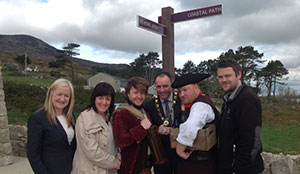
Bloody Bridge Mourne Coastal Route Launch
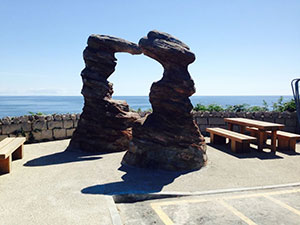
Smuggler's Head, Bloody Bridge
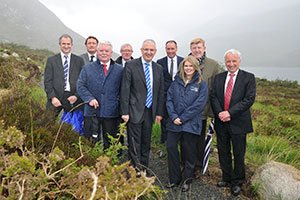
Silent Valley Walking Trails Launch
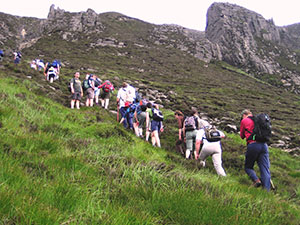
NI's foremost walking destination
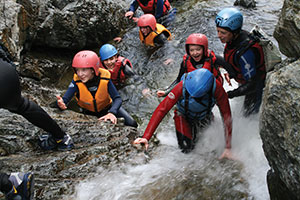
Coasteering
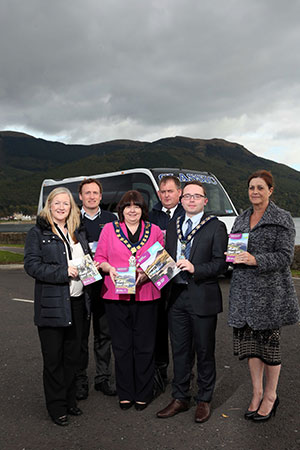
Coastal Route Coach Drivers' Handbook Launch
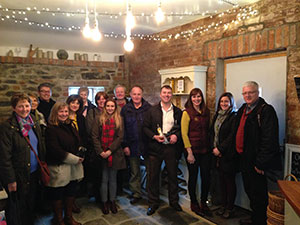
Economusee Study Visit
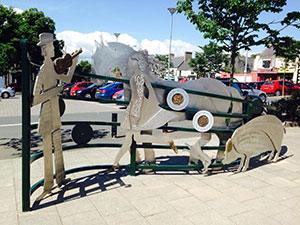
Castlewellan Public Art
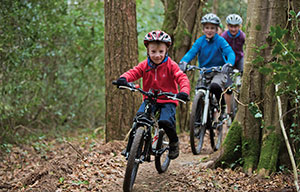
Mountain Biking in Castlewellan

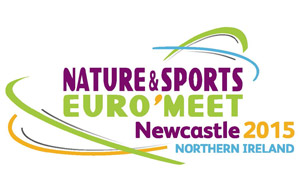
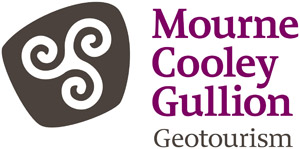

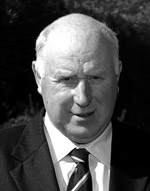 It is with great pride that I present the Annual Report of Mourne Heritage Trust for 2014/15. While few years of our existence have been without their challenges in sustaining the Trust’s activities, 2014/15 proved particularly testing. In the final week of the financial year, a disengagement letter from the Department of the Environment - the Trust’s biggest core funder - gave notice of the early termination of the funding arrangement that had applied for over a decade. After subsequent positive engagement with the Minister for the Environment and his officials, a new Natural Environment Fund was put in place and an offer of funding secured for a further nine months (to 31st March 2016). In the period of uncertainty between these developments, our ‘#LoveMourne’ campaign elicited a huge number of expressions of support from elected representatives, community organisations, local people and visitors. An online petition was contributed to by 1,500 people (and counting!). All were united and motivated by their appreciation of the special Mourne landscape and their desire to see it cared for.
It is with great pride that I present the Annual Report of Mourne Heritage Trust for 2014/15. While few years of our existence have been without their challenges in sustaining the Trust’s activities, 2014/15 proved particularly testing. In the final week of the financial year, a disengagement letter from the Department of the Environment - the Trust’s biggest core funder - gave notice of the early termination of the funding arrangement that had applied for over a decade. After subsequent positive engagement with the Minister for the Environment and his officials, a new Natural Environment Fund was put in place and an offer of funding secured for a further nine months (to 31st March 2016). In the period of uncertainty between these developments, our ‘#LoveMourne’ campaign elicited a huge number of expressions of support from elected representatives, community organisations, local people and visitors. An online petition was contributed to by 1,500 people (and counting!). All were united and motivated by their appreciation of the special Mourne landscape and their desire to see it cared for.![]()

